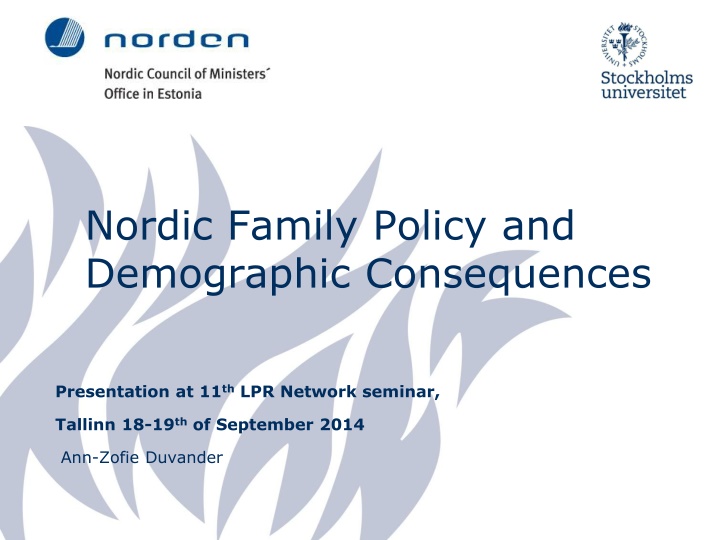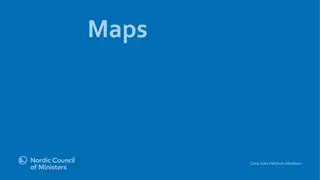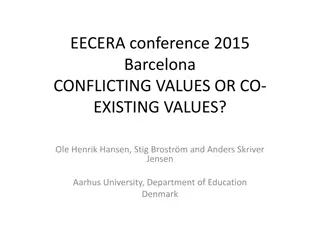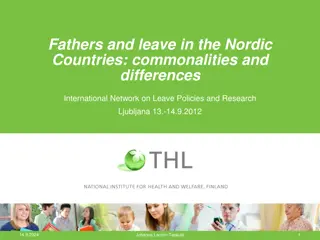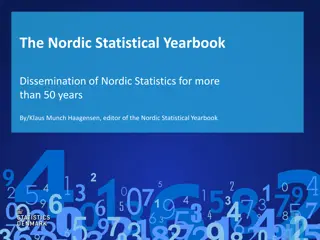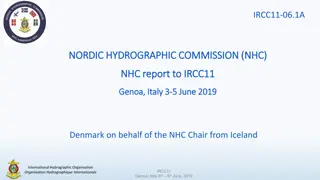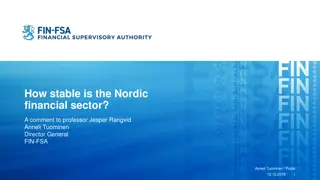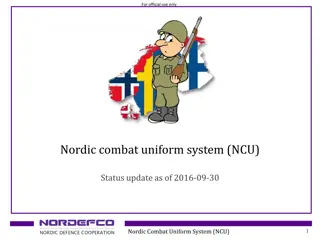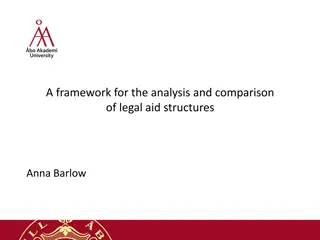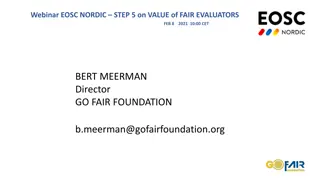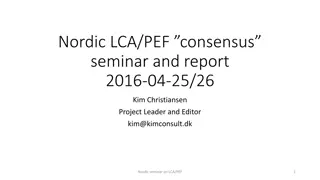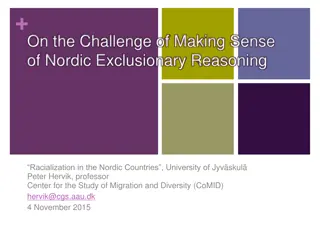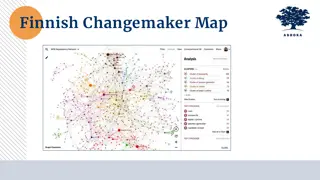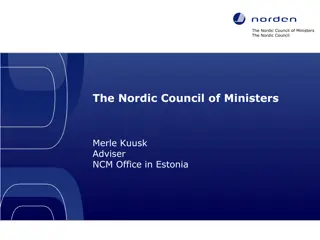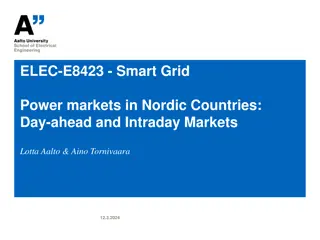Nordic Family Policy and Demographic Consequences Overview
This presentation discusses the outcomes of family policy in Nordic countries, focusing on aspects such as female labor force participation, male participation in childcare, fertility rates, family dissolution, poverty among children, and more. It also examines the influence of Nordic family policy on demographic behavior and life-course earnings, particularly in Iceland, Norway, and Sweden. Additionally, the relationship between fathers' parental leave use and union dissolution is explored, considering variations across Nordic countries over time.
Download Presentation

Please find below an Image/Link to download the presentation.
The content on the website is provided AS IS for your information and personal use only. It may not be sold, licensed, or shared on other websites without obtaining consent from the author.If you encounter any issues during the download, it is possible that the publisher has removed the file from their server.
You are allowed to download the files provided on this website for personal or commercial use, subject to the condition that they are used lawfully. All files are the property of their respective owners.
The content on the website is provided AS IS for your information and personal use only. It may not be sold, licensed, or shared on other websites without obtaining consent from the author.
E N D
Presentation Transcript
Nordic Family Policy and Demographic Consequences Presentation at 11thLPR Network seminar, Tallinn 18-19thof September 2014 Ann-Zofie Duvander
What are the outcomes of family policy in Nordic countries? High female labour force participation and/or gender segregated labour market? High male participation in childcare and gender equality? High fertility and/or late childbearing? High family dissolution? High reconstitution of family and/or lone parenting? Low poverty among children?
Social Policy and Family Dynamics in Europe (SPaDE) www.su.se/SPADE/ Demography unit Department of Sociology, Stockholm University
Nordic Family Policy and demographic Consequences (NORDiC) Trude Lappegard, Statistics Norway (PI) (217915/F10) Research Council of Norway (217915 Aim: Whether and how Nordic family policy influences demographic behaviour and life-course earnings
Nordic Family Policy and Union Dissolution Trude Lappegard, Statistics Norway Ann-Zofie Duvander, Stockholm University Syn ve N. Andersen, Statistics Norway l f Gar arsd ttir, University of Iceland Gerda Neyer, Stockholm University Ida Viklund, Stockholm University (presented at PAA 2014 in Boston, EPC 2014 in Budapest)
Research question Is fathers parental leave use associated with union dissolution? Does the association change over time? Are there differences between Nordic countries ?
Focus Three Nordic countries Iceland, Norway and Sweden Gender equality is an explicit policy goal A long tradition of promoting gender equality through family policy The parental leave program Facilitates the combination of childrearing and female employment Encourages men s participation in the domestic sphere and thus carries the potential to change gender relations within families
Expected effects and mechanisms Father s investment in the relationship and the family Achieve more equality in total time spent in paid and unpaid work Facilitate mother s situation Competing roles of father and mother at home? Difficult to be forerunner?
Parental Leave Programs in the Nordic countries Norway Iceland Sweden 68 67 66 65 64 63 62 61 60 59 58 57 56 55 54 53 52 51 50 49 48 47 46 45 44 43 42 41 40 39 38 37 36 35 34 33 32 31 30 29 28 27 26 25 24 23 22 21 20 19 18 17 16 15 14 13 12 11 10 9 8 7 6 5 4 3 2 1 MANDATORY MATERNITY LEAVE FATHER S QUOTA 68 67 66 65 64 63 62 61 60 59 58 57 56 55 54 53 52 51 50 49 48 47 46 45 44 43 42 41 40 39 38 37 36 35 34 33 32 31 30 29 28 27 26 25 24 23 22 21 20 19 18 17 16 15 14 13 12 11 10 9 8 7 6 5 4 3 2 1 68 67 66 65 64 63 62 61 60 59 58 57 56 55 54 53 52 51 50 49 48 47 46 45 44 43 42 41 40 39 38 37 36 35 34 33 32 31 30 29 28 27 26 25 24 23 22 21 20 19 18 17 16 15 14 13 12 11 10 9 8 7 6 5 4 3 2 1 LEAVE TO SHARE FLAT LOW RATE One year FATHER S QUOTA FATHER S QUOTA LEAVE TO SHARE LEAVE TO SHARE LEAVE TO SHARE MOTHER S QUOTA MOTHER S QUOTA 9 MOTHER S QUOTA PRE-BIRTH LEAVE 9 1992 1993 1994 1995 1996 1997 1998 1999 2000 2001 2002 2003 2004 2005 2006 2007 2008 2009 2010 2011 2012 2013 1992 1993 1994 1995 1996 1997 1998 1999 2000 2001 2002 2003 2004 2005 2006 2007 2008 2009 2010 2011 2012 2013 1992 1993 1994 1995 1996 1997 1998 1999 2000 2001 2002 2003 2004 2005 2006 2007 2008 2009 2010 2011 2012 2013
Data Administrative register data, Iceland, Norway and Sweden Time period 1993 to 2011 (2012 for Sweden) Sample Couples having their first common child Exclude: Couples where the child dies Either parent dies or emigrates Children born abroad Multiple births
Methods Discrete time hazard model Start to measure dissolution risk when child is 18-24 months Take into consideration that only dissolution date by year, including many sensitivity tests Follow couples for max 12 years Main explanatory variable: The father s parental leave use
Parental leave use variable Regulation variable No leave; Up to quota; More than quota
Iceland 100 80 60 40 20 0 2001 2006 No leave Up to quota More than quota Norway Sweden 100 100 80 80 60 60 40 40 20 20 0 1995 0 1994 2000 2005 1999 2004 13 No leave Up to quota More than quota No leave Up to quota More than quota
Results (still preliminary!) 1. Risk of union separation for couples with at least one child 2. Risk of union separation during different periods.
Risk of union separation for couples with at least one child. Iceland, Norway and Sweden. Odds ratios. Iceland Norway Sweden Father s leave No use Up to quota More than quota 1 0,84 0,72** 1 0,73*** 0,83*** 1 0,87*** 0,93*** Number of obs 25 764 931 694 1 477 566 15 Controlled for mother s /father s age, education, immigrant background, union status, number of children
Risk of union separation for couples with at least one child. Sweden and Norway. Computed odds ratios, father s use of parental leave and period. 1995-1997 1998-2001 2002-2005 2006-2009 Father s use of parental leave No use 1 1 1 1 Up to quota 0,87 0,91 0,87 0,83 More than quota 0,95 0,97 0,94 0,83 Controlled for: mother s/father s age, education and immigrant background; union status; number of children 1994-1996 1997-2001 2002-2004 2005-2007 Father s use of parental leave No use 1 1 1 1 Up to quota 0,61 0,71 0,78 0,86 More than quota 0,75 0,80 0,84 0,86 Controlled for: mother s/father s age, education and immigrant background; union status; number of children
Discussion Fathers use of parental leave is positively associated with union stability in the Nordic countries The relationship is not uniform Cannot conclude that more leave reduces union separation Indicates a complex relationship between gender roles and dissolution risk that needs more analyses!
Risk of union separation for couples with at least one child. Iceland, Norway and Sweden. Odds ratios. Iceland Norway Sweden Basic model Full model Basic model Full model Basic model Full model Father s use of parental leave No use 1 1 1 1 1 1 Up to quota 0.62*** 0.84 0.68*** 0.73*** 0.73*** 0.87*** More than quota 0.55*** 0.72** 0.73*** 0.83*** 0.66*** 0.93*** Log likelihood -2749.3686 -2720.97 -161663.07 -153380.7 -214007.52 -2022210.1 Number of observations 25,764 25,764 931,694 931,694 1,477,566 1,477,566 Controlled for: mother s/father s age, education and immigrant background; union status; number of children ***0.001 **0.05 **0.1
Kaplan-Meier survival estimates of union separation by use of parental leave. Iceland, Norway and Sweden Kaplan-Meier survival estimates - Sweden 1.00 0.75 0.50 0.25 0.00 0 2 4 6 8 10 analysis time 19 No leave More than quota Up to quota
